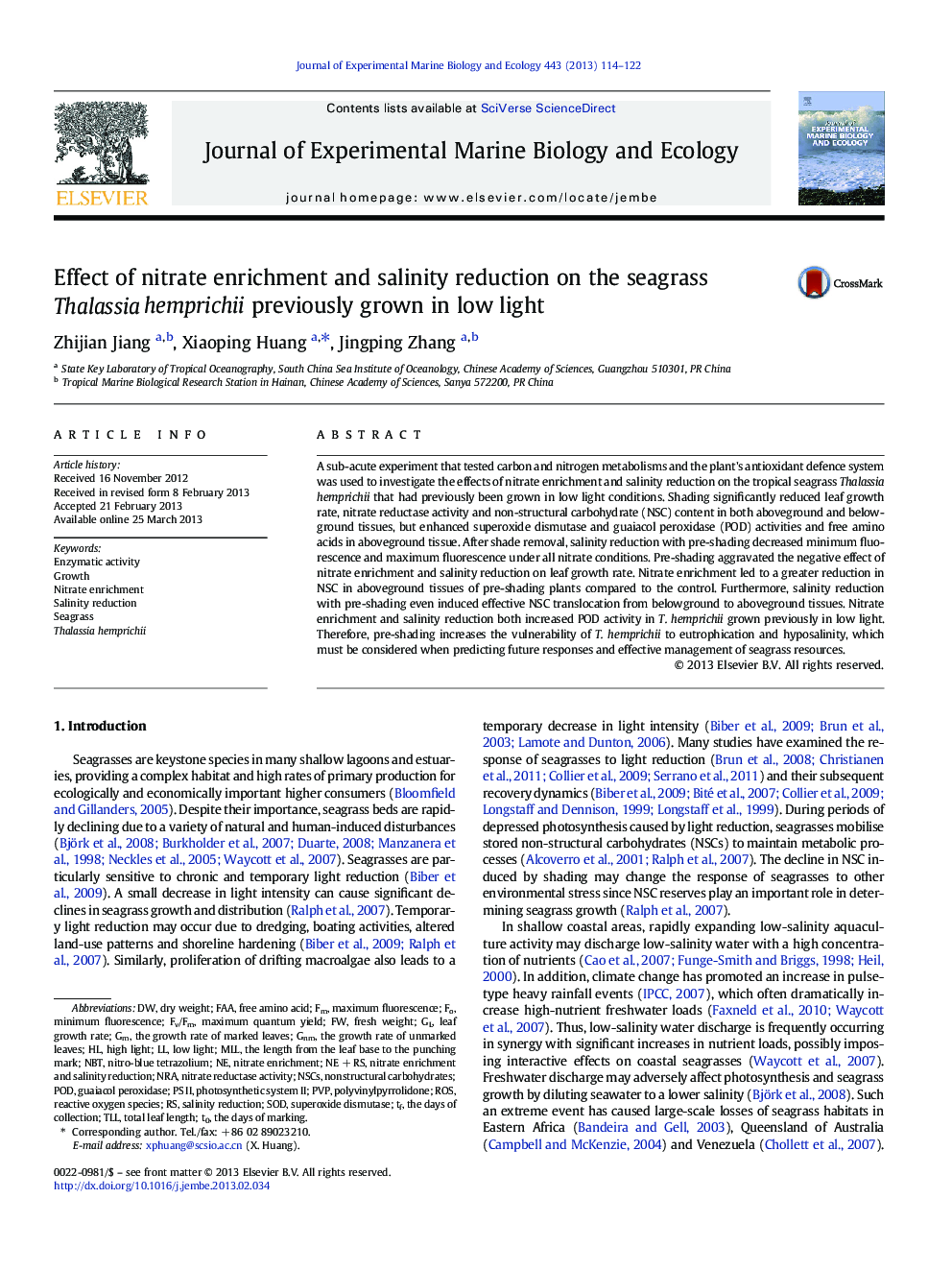| Article ID | Journal | Published Year | Pages | File Type |
|---|---|---|---|---|
| 4395778 | Journal of Experimental Marine Biology and Ecology | 2013 | 9 Pages |
•Nitrate enrichment and reduced salinity reduce more growth for preshading seagrass.•Reduced salinity induces carbon reallocation for preshading seagrass.•Nitrate enrichment decreases more carbon reserve for preshading seagrass.•Nitrate enrichment and reduced salinity cause greater POD for preshading seagrass.
A sub-acute experiment that tested carbon and nitrogen metabolisms and the plant's antioxidant defence system was used to investigate the effects of nitrate enrichment and salinity reduction on the tropical seagrass Thalassia hemprichii that had previously been grown in low light conditions. Shading significantly reduced leaf growth rate, nitrate reductase activity and non-structural carbohydrate (NSC) content in both aboveground and belowground tissues, but enhanced superoxide dismutase and guaiacol peroxidase (POD) activities and free amino acids in aboveground tissue. After shade removal, salinity reduction with pre-shading decreased minimum fluorescence and maximum fluorescence under all nitrate conditions. Pre-shading aggravated the negative effect of nitrate enrichment and salinity reduction on leaf growth rate. Nitrate enrichment led to a greater reduction in NSC in aboveground tissues of pre-shading plants compared to the control. Furthermore, salinity reduction with pre-shading even induced effective NSC translocation from belowground to aboveground tissues. Nitrate enrichment and salinity reduction both increased POD activity in T. hemprichii grown previously in low light. Therefore, pre-shading increases the vulnerability of T. hemprichii to eutrophication and hyposalinity, which must be considered when predicting future responses and effective management of seagrass resources.
